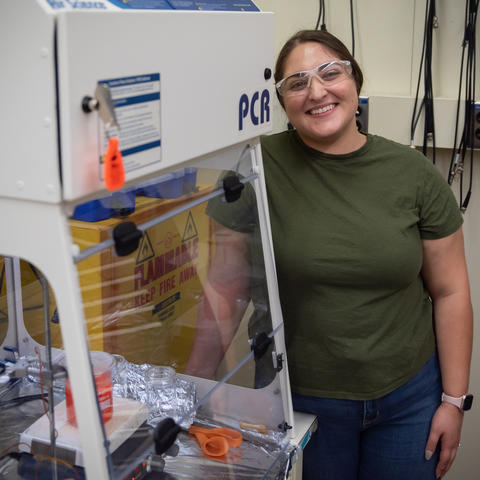Spotlight: Postdoctoral Researcher Ana Morales and the Nanoscale Plastics Pervading Our World

Nanoplastics are shedding from places you might not expect, including single-use coffee cups and laundry. Postdoctoral researcher Ana Morales (shown here) is part of the team studying the nanoscale particles.
Specifically, Ana’s efforts focus on creating a potentially more efficient way of studying the nanoplastics.
Before the traditional process can happen, researchers first need to generate a sample atop a surface. Depending on the source material, generating a sample of 10 micrograms can take anywhere from four to 16 hours. Ana is working on another way.
She’s also looking into the plastic particles shed by textiles such as blankets or coats when we do laundry, which make up a large chunk of nano-sized plastic pollution in our oceans. Shown here, Ana stands next to a setup meant to extract the plastic particles from an orange fabric.
… And about the coffee cups, here’s the NIST news story that details our research into them.
Follow us on social media for more like this from all across NIST!

